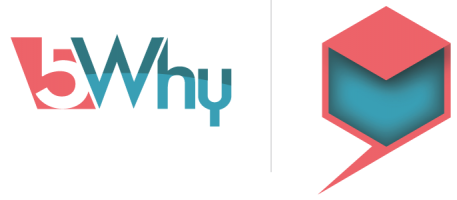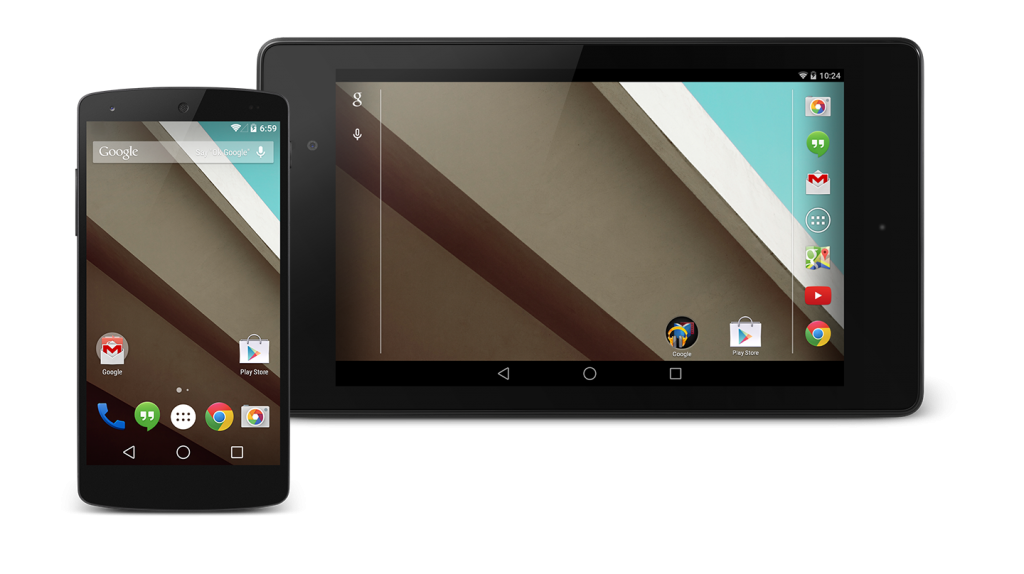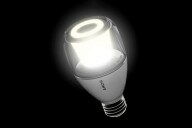This week, Google hosted its 7th annual developer conference – Google I/O – in San Francisco, with over 6,000 developers in the audience for the keynote presentation. Sundar Pichai, Senior Vice President of Android, Chrome, and Apps spoke about the momentum the company has seen in its mobile division; in the last 30 days there were over one billion unique Android users, with 20 billion text messages sent every day, and 93 million selfies taken (about 31 million were duck faces). Here are the top 10 announcements that Google made today.
1. Android L – the next version of Android, coming later this year
Android 4.4 was named ‘KitKat’, and today Google teased us by neither giving us the version number, nor the name of the next version. In a similar fashion to Apple, Google will be making a developer preview available from today, so that by the time the L-release is finalised later this year, many of our apps and games will already be updated to take advantage of the improvements.
Amongst some of the improvements that they noted are enhanced notifications (who knew notifications on Android could get better?); ‘personal locking’, which means you won’t need to enter a PIN, pattern, or password to unlock your device, if it recognises you are in a safe environment. For example if your smartwatch is paired and in proximity, that usually means you are as well. It will then automatically re-enable passcode protection when these familiar devices are not nearby – this saves time without sacrificing security. It will also feature redesigned multitasking, in that your Google Chrome tabs are individually added to your multitasking screen on Android alongside your open apps, and also app indexing, which means that when you Google something, search results from within relevant apps will appear in the results and take you directly within that app. For example, if you search for a restaurant on Google, a result will appear that will take you directly to an app to book a table.
2. Material Design – a modern design language for Google
This may have been the most exciting news of the day. Google is finally placing a unified focus on design, and it’s called “Material Design”. Material Design is focused on designing applications irrespective of what form factor you use them on – whether it is on a phone, a tablet, on a TV, or a watch – the application should transform and adapt to that form without jarring you, the user. A key element of this is introducing depth, elevation, and richer animations and shadows to design elements, so as to be able to feel as if it were ‘paper and ink’, the layers of application interfaces. Material Design is a modern, forward-thinking and lively design language that, in my opinion, is heading towards a much more complete and holistic direction compared to the competition.
It is the biggest design refresh in not only Android’s history, but in the history of the entire suite of Google applications, and there is no better way to illustrate it than with a video:
3. Performance and Battery improvements – which are always welcome!
Without getting too technical, Android L will completely replace the Dalvik runtime with the Android Runtime (ART). Effectively, this means that Android will have greater compatibility with hardware, it will have at least a twofold improvement in performance (which means no more application stutters) and it will be more memory efficient. It also includes graphical improvements, which will enable console-level graphic games to be developed for mobile.
After many years, Google is finally tackling battery life optimisation head-on with Project Volta. One key component of this is a new battery saver mode that can deliver up to 90 minutes more from your phone when needed. They have also given developers new tools to monitor what is chewing up battery, and a new JobScheduler API code to prevent apps from performing battery-intensive tasks, unless in certain conditions.
4. Android Everywhere – literally!
Google recognises that our lives will increasingly be filled with multi-screen experiences. Naturally, their next push is to have Android L operate everywhere – your home, television, laptop, phone, wearables, and your car.
This effort is backed by four key principles: it should be contextually aware, voice enabled, seamless across devices, and mobile first.
5. Android Wear – Google’s first smartwatches are available today!
Google is moving ahead of the curve with Android Wear. Android Wear focused on ‘glanceable’ information – in giving you the information you need, when you need it, without the effort of actually looking at your phone (which we do up to 125 times per day). The development tools are the same as for Android on phones and tablets, and developers can design for both square and circular designs.
Android Wear is an integration of Google Now’s contextual information of travel times, weather, package tracking and more, from apps on your phone, and apps installed on the watch. For example, you’ll receive notifications on your watch when you get a message, call, or email which you can reply to from your watch without touching your phone. If you dismiss the notification, it’s synchronised and dismissed from all your other devices as well. Of course, there’s a Do Not Disturb mode if you just want to use the watch for the time. It can do a heap of other things as well, including setting reminders that appear at specific locations like home or work, make notes in the Google Keep app, play music, or work as a pedometer or heart-rate monitor. Another demo they showed was with the Lyft app (similar to Uber): “Okay Google, call me a car” which calls a car and driver – all from your wrist.
To my surprise, two Android Wear devices are available to order in Australia today – the LG G Watch and Samsung Gear Live. I’ll be waiting for the circular Moto 360 later this year.
6. Android Auto – Android in the car
In direct competition with Apple’s CarPlay, Google has introduced Android Auto, which puts navigation with the trusty Google Maps front and centre. It is coupled with your messaging apps and reads your messages to you, as well as your music/podcast apps – apps such as Pandora, Spotify, Pocket Casts, and TuneIn Radio already work with Android Auto. And the best thing? It is completely voice enabled so you never have to touch your phone while driving (you shouldn’t be anyway, and that’s the point!). Google is partnering with a number of companies and manufacturers including Alfa Romeo, Audi, Bentley, Ford, Honda, Hyundai, Jeep, KIA, Mazda, Mitsubishi, Nissan, Subaru, Volkswagen and many more in the ‘Open Automotive Alliance’. The first cars operating with Android Auto will be driving away later this year.
7. Android TV – Android in the living room
Google has unsuccessfully spent years trying to work its way into our living rooms. They found some success last year with the Chromecast and are looking to take the next step with Android TV. Again, it operates with the same tools used to develop for Android on phones and tablets, and now wearables and cars. All Android TV requires is a directional-pad controller with voice input. Don’t have one? There’ll be an app for your phone, tablet, and smartwatch.
Focused on a ‘lean back’ experience, the aim is have content front and centre on your television. It’s being combined with the power of Google Search, so that if you search for “Oscar nominated movies from 2002” (with your voice, of course) you’ll receive those exact results and can begin watching in seconds. Gaming is taking a front seat as well, with increased support for game controllers, and multi-device-multi-player – where one person can play with a game controller and another from a tablet against each other. Similar to the large partnership with Android Auto, Android TV will ship on the entire 2015 HD and 4K smart TV ranges from manufacturers including Sharp, Sony, and Philips.
8. Chromecast – the $49 dongle that just got better
The Chromecast has recently seen huge momentum – available in 18 countries, it consistently outsells all other streaming devices and is a top seller on Amazon. I have two Chromecasts in my house and they are incredibly useful for sharing and playing content on the big screen. The new improvements include the ability to cast to your TV without being on the same WiFi network, ‘Backdrop’ which turns your TV into a digital photo frame with curated mixes of news, weather, and photos. If you see an image you like you can ask your phone, “What’s that Chromecast?” and Google will provide information on that image. Importantly, you can mirror your Android device to your TV with a single button – no matter what app is open, even the camera can be mirrored to the TV.
9. Chromebooks – Android apps are coming!
Today there are 8 manufacturers of 15 different Chromebooks in 28 countries: Acer, HP, LG, Samsung, Dell, Lenovo, ASUS, and Toshiba. Chromebooks are focused on speed, simplicity, and security, and this had made them a hit. Ten of the top ten highest-rated laptops on Amazon are Chromebooks with significant growth in the education sector.
The new features Google announced are the ability to unlock and sign-in to your Chromebook when your phone is nearby. Remember how you don’t have to enter a passcode to unlock your phone when your smartwatch is nearby? This is like that. It’s all about the seconds you save in order to get things done. Furthermore, notifications are mirrored between Android devices and your Chromebook, which includes calls and texts. Unlike Apple, they didn’t demonstrate whether you could actually answer calls on your laptop.
The biggest announcement was the ability to bring some of the one billion Android apps to Chrome OS – whilst keeping it intuitive and smooth. They’ve managed to do it, and Google previewed apps like Evernote, Flipboard, and Vine, all running natively on a Chromebook. If they can pull this off on a wide scale, the potential of Chromebooks will have been immensely increased.
10. Everything else…
It’s difficult to cover everything that was announced. Here’s a few other announcements:
- Native Microsoft Office editing in Google Drive (Docs, Sheets, Slides) editors without the need to convert the file;
- Google Apps usage is strong: 58% of the Fortune 500 use Google Apps, and 72 of the top 100 universities use Google Apps;
- Android One, which is a programme that Google will use to provide high quality yet affordable (think sub-$100) smartphones to those in emerging markets, starting with India. This will empower the next five billion web users;
- Google Fit is a central hub for all the fitness data from all your devices and can share that data between various apps, with your permission – Adidas and Nike are a part of this programme; and
- Google Play Games has over 100 million users in the last six months, which makes it the fastest growing mobile game network of all time. They’re introducing new profiles and better cloud saving for games. Cloud saving means your data can be synced across Android, iOS, and the web, irrespective of device.
My take on the announcements…
A few ago I covered Apple’s WWDC where they essentially showed greater integration between their own products – to benefit with Apple you have to use Apple products.
Google is playing a slightly different game. They didn’t really talk about improvements to current products or projects such as Hangouts, Google+, YouTube, Nexus phones/tablets, Google Glass, self-driving cars – nothing like that. And, unlike Apple, improvements to their software itself was spoken about in a limited way – after all, things like custom keyboards and widgets happened in Android 4-5 years ago.
Google spoke about how Android is “not vertically integrated, but an open-source large scale project”, and it shows. This is evident in the partnerships with manufacturers and other companies they’ve made for every form of Android. They previewed new transformations of Android L for wearables, TV and the car, whilst continuing improvements for the version we know and love on phones and tablets already. They’re bridging the gap with Chrome and bringing web and native applications ever closer together. Furthermore, they’re doing so at breakneck speeds – Google Play Services ships every six weeks and 93% of all Android users are on the latest version, which beats regular OS release cycles.
However, let’s not forget the new design language that they introduced right at the beginning. With all these new transformations of Android, your content and apps needs to be able to adapt seamlessly between them yet still allow you to feel familiar about how to use them – in other words, device agnostic design. It’s an ongoing project – Android L won’t be released officially until later this year – but it has me excited. Let’s just hope Google can pull it off.






















No Comments